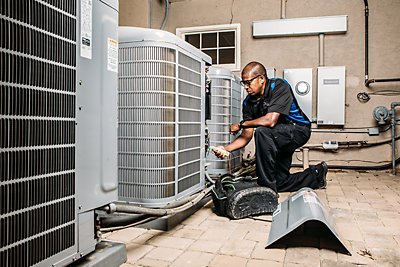
As the landscape of regulations and standards for refrigerants continues to evolve, it's imperative for homeowners and HVAC professionals to remain updated on emerging alternatives, so that they can efficiently keep HVAC systems efficiently running while staying within the safety and regulatory standards determined by the state.
In compliance with industry regulations, the HVAC industry is shifting from Puron (R410A) refrigerant to Puron Advance (R454B) in Q4 of 2024. This chemical was developed in response to the refrigeration industry's efforts to fulfill the objectives outlined in the UN Montreal Protocol Kigali Amendment, ratified in 2016.
The Montreal Protocol, aimed at safeguarding the ozone layer, has established a gradual reduction plan for hydrofluorocarbons (HFCs) to mitigate their environmental effects. In line with this reduction plan, the HVAC sector has pursued refrigerants that are more eco-friendly, exhibiting reduced ozone depletion. R454B Refrigerant has emerged as a viable substitute for R410A as it fulfills these requirements and is listed among acceptable alternatives under the SNAP (Significant New Alternatives Policy) program overseen by the US Environmental Protection Agency (EPA).
From what we know, prices will increase as early as the 3rd quarter of this year (2024).
Tip: If you have a current HVAC equipment estimate, or are in the market for a new system, now truly is the best time to consider purchasing.
Fact: This is not just relative to Coolray. All HVAC companies must comply will the new standards beginning as soon as Q3 of 2024.
FYI: The price increase will not equate to an upgrade in system efficiency, rather it will simply keep up with the industry requirement of using R454B refrigerant.
R454B, also known as Puron Advance or Opteon™ XL41, is a next-generation refrigerant developed as an alternative to R410A, which is commonly used in air conditioning and heat pump systems. R454B is designed to have lower global warming potential (GWP) while maintaining similar performance characteristics to R410A. Its introduction is significant as it aligns with industry efforts to reduce the environmental impact of refrigerants and comply with regulatory requirements regarding greenhouse gas emissions.
Due to the increasing legal obligations and heightened consciousness regarding carbon emissions reduction, manufacturers of air conditioning and refrigeration systems are initiating a transition towards employing R454B refrigerant.
Furthermore, certain manufacturers in the air conditioning and refrigeration sector are revamping their systems to integrate heat pump technology, enhancing the efficiency of R454B refrigerant. This forward-looking transformation within the HVAC industry is set to persist, driving widespread acceptance and advancements in air conditioners, refrigeration units, and heat pump systems utilizing R454B refrigerant.
It's imperative for HVAC contractors to adhere to proper handling and storage protocols. Adhering to these guidelines ensures the refrigerant's integrity and enables safe and efficient utilization within air conditioning systems. Key aspects of proper handling and storage encompass suitable cylinder storage conditions, safety measures, and leak detection and repair.
Storage of R454B refrigerant cylinders must comply with specific conditions to guarantee safety and preempt potential issues. Cylinders should be stored in well-ventilated areas and shielded from temperatures exceeding 52°C (125°F). Additionally, it's important to keep cylinders away from direct sunlight, heat sources, or environments prone to flames or sparks that could trigger refrigerant ignition.
When handling R454B refrigerant, HVAC contractors must be aware of potential risks and observe recommended safety protocols. These protocols may entail utilizing personal protective equipment (PPE) like safety goggles, gloves, and long-sleeve clothing to minimize skin and eye exposure to the refrigerant. Additionally, contractors should receive proper training in refrigerant handling to mitigate the risk of injury or refrigerant leakage.
Even though R454B will be required for new systems in 2025, R410A will remain accessible for equipment repairs over the next few decades. A well-maintained HVAC system typically lasts between 15 to 20 years. If you're in need of a new unit, consider purchasing it this year, before the price increases take effect in Q3 or Q4 of 2024. There should be an adequate supply of R410A to last the lifespan of your system.
As homeowners and HVAC professionals navigate this shift, staying informed about emerging alternatives like R454B is essential for maintaining efficient and environmentally responsible HVAC systems. If you are considering a new heating & cooling system for your home, the experts at Coolray can answer any questions you may have.
Get up-to-date current news, promotions and industry tips.